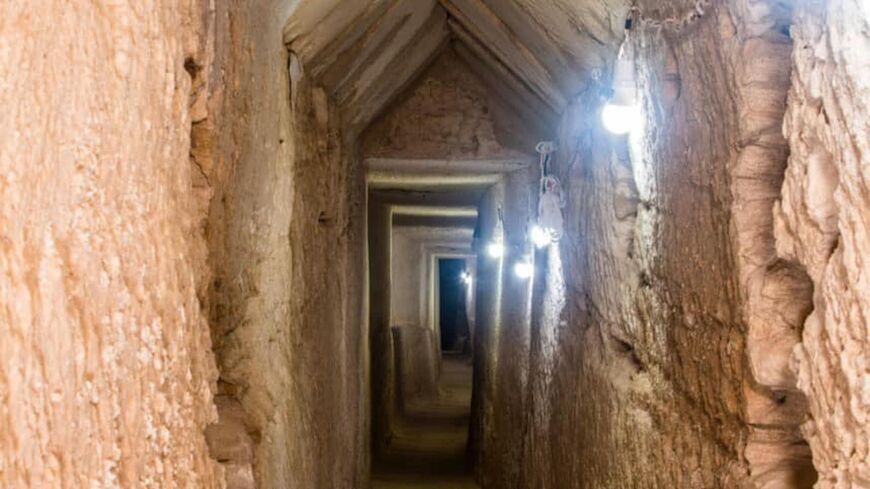The Dominican-Egyptian archaeological mission of the Universidad Autónoma de Santo Domingo has unearthed a tunnel carved 13 meters below the surface of the earth in the area of the Temple of Taposiris Magna, west of Alexandria.
Taposiris Magna, whose ancient name means tomb of Osiris, is a town that was founded by Ptolemy II Philadelphus between 280 and 270 BC.
The height of the discovered tunnel is about 2 meters, with a length of 1,305 meters. Two alabaster-made heads were also found near the temple — one for a person from the Ptolemaic period, the last dynasty to rule Egypt (from 305 to 30 BC), and the other is likely to be a statue of the Sphinx, according to a statement by Egypt’s Ministry of Tourism and Antiquities.
The initial studies indicate that the architectural design of the tunnel is very similar to the design of the Tunnel of Eupalinos in Greece, a 1,036-meter-long tunnel built in the sixth century BC to serve as an aqueduct. But Kathleen Martinez, head of the mission, revealed it is longer, describing the discovery as an engineering miracle.
Also, part of the tunnel was discovered submerged under the waters of the Mediterranean Sea. A number of pottery pots and ceramic jars were found under the muddy sediment.
The Egyptian coast was hit by at least 23 earthquakes between 320 AD and 1303 AD, which led to the collapse of part of the Temple of Taposiris Magna and its sinking.
The mission during the previous excavation process found many artifacts inside the temple, including coins bearing the images and names of Queen Cleopatra VII and Alexander the Great, who founded Alexandria in 332 BC.
Magdy Shaker, chief archaeologist at the Ministry of Tourism and Antiquities, hails the new discovery and hopes it might lead to Cleopatra’s tomb.
“Apart from the fact that the tunnel has a unique and distinctive design regarding its depth, which is 20 meters, it has an extension in the sea so it may lead to the tomb of Cleopatra or any of the Ptolemy kings,” he told Al-Monitor.
Cleopatra, known also as Cleopatra VII, was the last Egyptian queen who ruled Egypt, Cyrene and Cyprus, heir to the 275-year-old dynasty of the Ptolemies.
Cleopatra's palace has been underwater since the destructive earthquake-turned tsunami that hit Egypt 1,400 years ago, taking down many antiquities, including the palace, a landmark for her power.
“The tunnel is solid and has no writings so it was not built for religious reasons. There are no traces of water in the walls so it was not built to store water. It perhaps may lead to a tomb, hopefully to Cleopatra's," Shaker said.
He added, "If it happens, it will be a great achievement for Egypt. It will be a big treasure following that of the tombs of Tutankhamun and of Pharaoh Psusennes I (c.1039-991 BC) of the 21st dynasty.”






